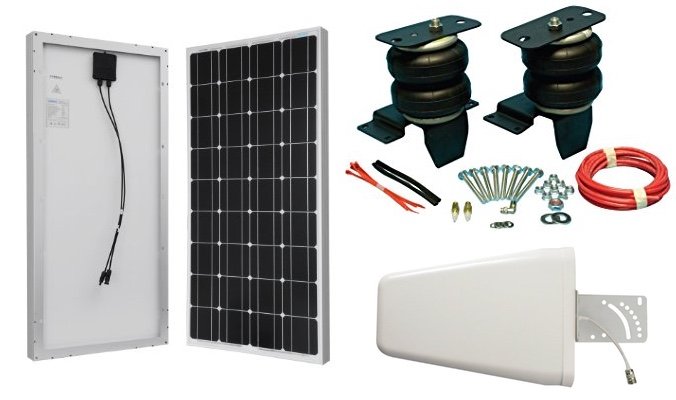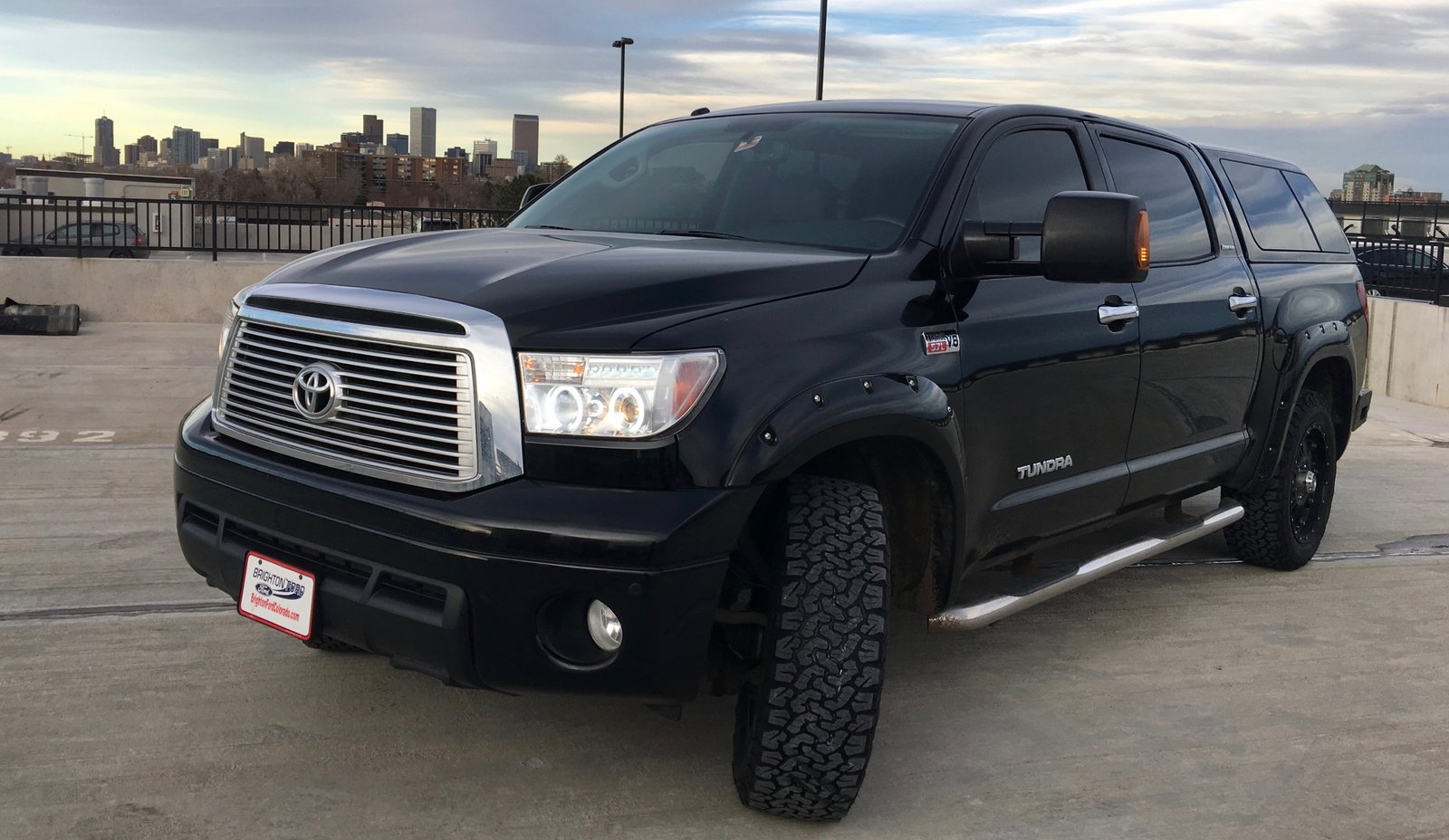
In the 16 months or so I spent researching and preparing for life in an RV, I came across countless blog posts and videos about gadgets and upgrades that make RVing easier. Some people get into full time RV life as a way to save on their daily cost of living. While that isn’t my primary goal, I do see this as an opportunity to better balance my income and my various financial priorities (saving for retirement, investing in my business, minimizing or eliminating debt, healthcare, and an adequate emergency fund). That means it can’t all go to a backlog of thousands of dollars worth of “nice-to-have” RV technology!
Acquiring a truck and trailer I could both work and live in, plus the “must-have” equipment and other expenses related to moving, was expensive enough. And I didn’t want to spend forever waiting to have the perfect rig before I hit the road! So I borrowed a concept from the tech product management world called Minimum Viable Product, and focused on the absolute necessities to get me on the road. As time goes on, I’ll get an idea of which upgrades will be the most useful, instead of overdoing it from the beginning.
So here are some of the commonly discussed gadgets and upgrades, and the cheaper alternatives that are working for me and my budget:
Electric Power System Upgrades
What I’m not buying yet:
- Expanded solar panel array (I currently have a dinky 60W panel, which is nowhere near enough for all my needs)
Cost: I’m estimating $3,000 - Fancy RV batteries with better capacity
Cost: A few hundred for some new deep cycle RV/marine batteries; thousands for big lithium ion batteries - Inverter to give me AC power capabilities from my DC batteries (necessary to run TV, microwave, air conditioner/ducted fan, toaster, blender, computer power bricks until I have a laptop with USB-C power)
Cost: Several hundred including qualified labor (I know just enough to be dangerous) - Gas and/or propane-powered generator with inverter
Cost: $500-700 used, $1,000 new
What I’m doing instead:
In short, I’m camping at locations with at least a 30 or 50-amp power hookup for RVs. This has not been difficult at all so far – plenty of state and county parks have RV sites with power on hand, if not full hookups. If I’m traveling for more than one day at a time, I have enough capacity with my current batteries (which also charge off my truck’s alternator and the solar panels) to cover my needs in transit – I just don’t have enough to stay in place and do work on a laptop. I think a generator may be in my near future, as it can enable me to do free off-grid camping, which can quickly pay for itself.
One cool upside to living in an RV is that most of my tech gizmos that use a DC power source – normally requiring a cumbersome power brick to convert from an AC wall outlet – can charge off my batteries since I have DC outlets inside the rig. I’ve bought 2 Anker PowerDrive 2 USB chargers, which can supply a large amount of current to devices which support quick charging. I keep one in the trailer and one in the truck. I also have an Anker PowerCore 26800, which is a giant external USB battery charge- close to the largest battery size the FAA will allow on an airplane. Charging that thing once is enough to charge my phone and any other USB-charged gadgets for about half a week (and also protecting those other devices from possible issues by connecting to RV power without an inverter other surge/under-voltage protection. I’m excited that newer computers can do this via USB-C, because eventually I’ll have an extremely battery/solar-friendly tech setup.
Tow vehicle upgrades
What I’m not buying yet:
- Beefed up rear end suspension: added leaf springs, helper air springs, and rear sway bar. Improves handling while towing and eliminates sagging so the trailer and truck can ride level.
Cost: ~$1,300 including labor - 5 or 6 small, strong wheels. My used truck came with 20″ aftermarket wheels that look great, but I only had 2 or 3 rather expensive choices for tires with enough load rating for my trailer. The wallet hit for replacement tires is one thing, but it’s extra concerning that I could have trouble even finding ones that fit if I’m far from a large city. And I would like to start doing more off-grid camping, and at that point the “if you have one, you have none” rule applies with spares.
Cost: $1,000-1,700 (including tires, not including any trade-in value)
What I’m doing instead:
Trusting what I’ve got. My trailer is well within my truck’s tow rating (and my tires’ load rating), and I’m still learning the best way to dial in my truck’s weight distribution hitch, which does a lot to level the rig out. It’s not perfect yet, but these upgrades are in the “nice-to-have” territory.
Cellular Connectivity Upgrades
What I’m not buying yet:
- Another line on a second carrier to increase the areas I can get a strong signal.
Cost: $70-115/month. - Dedicated wi-fi hotspot device(s). Serves an always-on data connection to several devices without messing with my phone’s tethering/hotspot mode, and can be connected to an external antenna for improved signal.
Cost: 2 x $150-200 (I’d have one network’s SIM card in a hotspot while using the other network’s SIM card in my phone.) - Cell signal booster. This device uses the maximum power allowed by the FCC to a roof antenna and can turn weak, almost unusable signals into a usable one. Unlike a hotspot, this device provides improved cellular signals to all compatible cell devices inside a small range.
Cost: $479 for a weBoost Drive 4G-X. - 2 roof-mounted omnidirectional cell antennae,
1 roof mast-mounted directional cell antenna: tools for improved hotspot/booster signal in various situations.
Cost: $20-50 per antenna.
What I’m doing instead:
I’m clinging to the old Verizon Unlimited LTE plan I’ve had since 2010, and using the hotspot/tethering modes on my phone. I’m also being more conservative about my campsite selections until I’ve built up my tools for signal strength and redundancy. Some tools that are helping me do this:
- Campendium campsite reviews often include camper-reported data on cellular signal strength.
- The Coverage? iOS app aggregates all 4 major US networks’ coverage maps for quick checks on areas they claim to cover.
- The RV Mobile Internet Resource Center is run by full-time RVers and has free guides that should be enough for basic needs, as well as a paid membership option with detailed information and community forums for people like me who depend on mobile internet for their livelihood.
But I’ll never skimp on safety & maintenance.
When I’m towing, I’m carrying 6 to 8 tons of equipment at highway speeds on 8 wheels. An equipment failure or emergency could prove fatal to anyone on the road. I don’t use this approach for anything critical to the safety or integrity of my rig. This includes other basics like keeping my wheels and tires maintained and out of the sun, and various sealants to keep my trailer from getting leaks.



 (photo credit:
(photo credit: